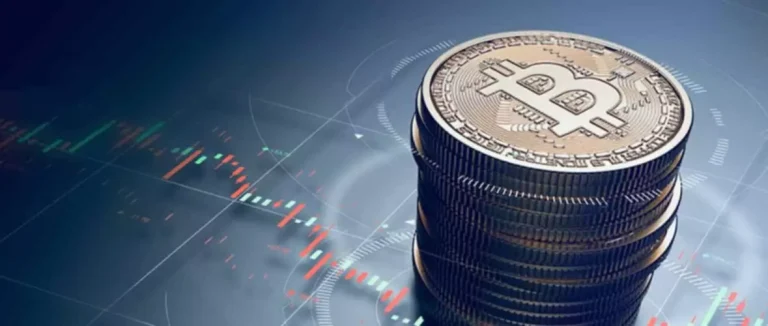Content
Multiplying the gas units consumed by the price per unit of gas helps one to ascertain the cost of a purchase. For most users, wallets automatically conduct this computation; expert users can adjust these settings. This mechanism charges senders of transactions with a small fee called gas fee which is then used to reward block producers who validate transactions on the network. Even though they are an effective means of incentivizing miners to keep verifying transactions and maintain network security, gas fees are nonetheless every user’s most hated part about Ethereum. People hate gas fees not only for a general disdain toward fees, but https://www.xcritical.com/ because they can be absurdly expensive when the network is congested.
What is The Open Network and Toncoin (TON)?
After The Merge—the merge Smart contract of the Beacon Chain and the Ethereum main chain when proof-of-stake was implemented—fees began to range from a few dollars to as high as $30. However, The Merge was not designed to address the problem of high fees. It was one of many updates that, when combined, are believed to eventually lower gas fees.
- With the ever-evolving landscape of cryptocurrency, staying informed on these foundational concepts is key to thriving in this dynamic field.
- In most blockchain networks, gas fees for crypto transactions are handled by miners.
- Setting a max fee for gas is a way of telling the Ethereum blockchain that X gwei is the most you are willing to spend by sending X gwei as your total gas fee.
- Before joining tastycrypto, Michael worked in the active trader divisions of thinkorswim, TD Ameritrade, and Charles Schwab.
- The gas fees go to crypto miners whose computers are used to validate blocks of transactions on the Ethereum blockchain network.
Gas Fee Explained: Understanding Its Role in Crypto Transactions
Crypto gas fees are essential, and if you want to explore crypto, you’re going to need to pay up. Understanding the intricacies of gas in cryptocurrency is indispensable for navigating the crypto space effectively. With the ever-evolving landscape of cryptocurrency, staying informed on these foundational concepts is what are ethereum gas fees key to thriving in this dynamic field. Depending on the computing effort needed, every transaction or interaction with a smart contract uses a particular number of gas units. A basic ETH transfer, for instance, usually requires about 21,000 gas units, but more complicated activities requiring smart contracts take much more. There you have it, the scoop on gas fees in blockchain transactions.
What Are Ethereum Gas Fees? How ETH Network Fees Work
Gas is used to pay for computational resources on the Ethereum blockchain. For example, gas is required to send ETH, to mint and buy non-fungible tokens (NFT), and to utilize Ethereum-based smart contracts and decentralized applications (dApps). For this reason, the amount of gas required to execute these functions is of interest to many network users. Sending an ETH transaction is typically cheaper, while more complicated smart contract and dApp executions tend to be more costly.

Who gets paid the gas fee in my transaction?More
Gwei is a term derived from combining “Giga” (a unit of measurement) and “wei” (the smallest denomination of Ether). For instance, if you’re buying a token or interacting with a DeFi platform, knowing how gas works can prevent costly mistakes. There is no such thing as a free lunch and there’s certainly no such thing as a free transaction.
In particular, EIP-1559 changes the gas fee mechanics for Ethereum. How gas fee works is similar to how gas/fuel works for our vehicles. In order to get from Point A to Point B, the vehicle needs to be filled up with a sufficient amount of gas. While it is impossible to avoid paying for gas when using the Ethereum blockchain, there are at least some ways to make them less burdensome.
This is in contrast to cloud computing, which is a centrally managed computing process (usually via a company’s data center). Gas is paid to the decentralized network of computers for performing the work — in this case, the computing power — needed to execute and record operations on Ethereum. Developers on Ethereum should take care to optimise their smart contracts usage before deploying. If lots of people are using a poorly written smart contract, it will consume more gas and could inadvertently cause network congestion. The priority fee (tip) incentivizes validators to include a transaction in the block.

The price itself is defined by supply and demand for transactional capacity on the network at the time of execution. Practically all actions on the Ethereum blockchain require gas in order to be executed. Paid in Ethereum’s native coin ether (ETH), this transaction fee on Ethereum is referred to as the gas fee — or gas price. Most gas costs are priced in gwei, which is a small denomination of ETH; 1 ETH equals 1 billion gwei. Gas is used to pay for ETH transactions, token minting, executing smart contracts, and powering decentralized applications (dApps).
The main determinant for gas fee prices is the supply of validators and the demand for transaction verification. A larger number of miners indicates a smaller chance for one entity to control the network. Should transactions be free, hostile players might flood the network with never-ending computational cycles, therefore upsetting its functioning. Ethereum adds a barrier helping to prevent such misuse by charging a cost to every transaction. Layer 2 scaling solutions are off-chain, meaning they handle transactions separately from the Ethereum blockchain. Though there are different implementations of layer 2 scaling solutions, they all act in a similar way.
Burning a coin or token permanently removes it from the total supply. The gas fees go to crypto miners whose computers are used to validate blocks of transactions on the Ethereum blockchain network. Gas is paid in Ethereum’s native currency, Ether, which is the actual cryptocurrency that investors trade on a crypto exchange app. Gas prices in the crypto ecosystem are subject to variation, influenced by demand just as conventional fuel prices are. Increased transactional activity leads to heightened gas prices, particularly during times of network congestion when users are willing to pay a premium to prioritize their transactions. At the time of writing, it is hardly feasible to trade or transfer tokens on UniSwap due to gas prices.
It is based on the complexity of the operation you intend to perform, as well as the speed at which you want the action to be fulfilled. This is because complex transactions require more resources and validators/miners will prioritize transactions offering the highest gas limits. The first major reason why gas fees are costing more is simply that ETH costs more. Recall that gas fees are denominated in gwei, which is a different way to represent an amount of ETH. The main catalyst for this rising demand is the booming decentralized finance (DeFi) and NFT sectors, which continue to attract new users to Ethereum’s ecosystem. Your gas fees are the total cost of the actions in your transaction.
In most blockchain networks, gas fees for crypto transactions are handled by miners. Additionally, gas fees reflect the computing power needed to execute transactions on the network. This indicates that larger transactions will incur higher gas fees. Another way to spend less on gas fees is to set a maximum gas fee limit on your transaction. Setting a max fee for gas is a way of telling the Ethereum blockchain that X gwei is the most you are willing to spend by sending X gwei as your total gas fee. Once the transaction is completed, the Ethereum network will refund the remainder of the max fee that wasn’t used as part of your total gas fee.
Whenever work is being done and money changes hands, someone is being compensated. Layer-2 chains are built atop Ethereum, offering lower fees and handling more transactions. They’re a good choice to save on fees for transactions that don’t need to happen on the main Ethereum network. Network fees on Ethereum are called gas.Gas is the fuel that powers Ethereum.
But for a transaction that involves interacting with a smart contract, 21,000 is not enough. If you are interacting with smart contracts, please set a higher gas limit. An auction-style mechanism determines the gas fees, where the user paying the highest amount is prioritized in the queue of pending transactions. This means the amount of fee influences how fast a transaction is processed. In order to get an understanding of why gas fees cost so much and how you can save on them, it’s important to understand how they are calculated.
Every time a user conducts a transaction on the Ethereum network, even a simple activity such as sending some cryptocurrencies to family members or friends, computational power is required. This power consumed in completing the transaction requires a certain amount of crypto, called gas fees, to be paid. Other blockchain networks also generate fees when work is being computed.
